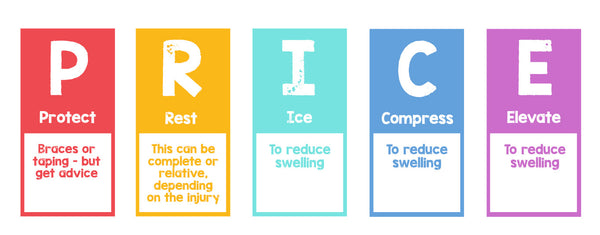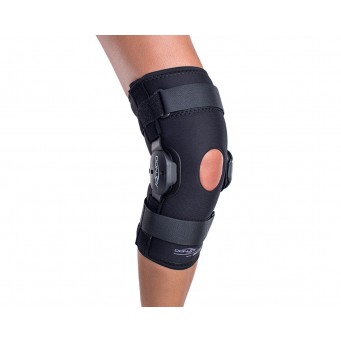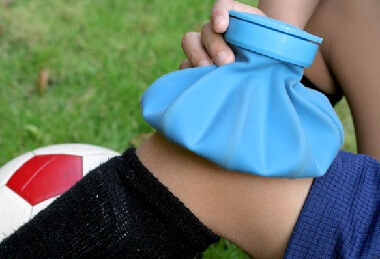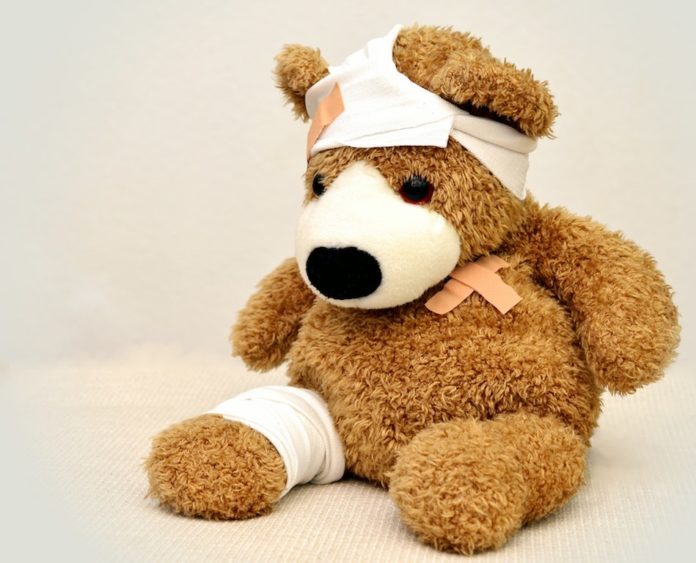This post will talk about anatomy in a general sense, and how the body naturally reacts to injury. We will begin with diagnosing muscle, tendon & joint injuries. More importantly, we will answer how to treat these injuries when SHTF.
First, we have to explore the inflammation reaction. Injury causes several things to happen at once, how much, and how intensely, is a matter of severity of the injury. Injury causes the release of a chemical known as histamine. Histamine causes several things to happen at once, first is redness caused by blood vessels dilating. Second is swelling as capillaries and lymphatic vessels open up and leak fluid under the skin between the muscle and skin. This is done for several reasons, one to immobilize the affected joint or tendon from movement – it’s not 100% of course, but it will get your attention and limit movement, in the case of a severe injury you won’t be able to move the affected joint at all. Swelling has a second effect – pain. Stretching tissues will cause pain, again depending on the level of swelling it can be mild or intense. Think of swelling as a secondary injury, you hurt the muscle tendon or joint in some fashion now swelling causes more stretching of tissue leading to if unchecked an even longer recovery time and the grim possibility of residual injury after things have healed. Residual injury in simplest terms is the story of the guy or gal who sprains their ankle, under treats, it and guess what, they step off a curb and roll the ankle again for no apparent reason, do that a few times and you have an ankle like a slinky.
Now, this is when we have to think long term, I teach people to think of injury as an increase in the relative speed of the aging in the joint that is affected. It will wear out faster than a non-injured joint. We want to make sure that we do not under treat, especially the when weight-bearing joints are injured. Fingers also tend to not heal well, and hands are extremely important for our survival.
Related: What You Really Need in Your SHTF First Aid Kit
Two words to also remember is acute and chronic, simply put, if you injured yourself an hour ago, it’s acute. If you under treat it, overuse it, or irritate the heck out of it, you can make an acute injury chronic. Chronic can mean years or decades of chronic pain, depending on how badly you ignore the symptoms. The old school nonsense of walking it off, shake off, or try to ignore it, is the kind of tiny-brained thinking that turns simple acute, into painful debilitating chronic problems. Pain is there for a reason, ignore it and you can double or triple your recovery time, and give yourself a lifetime of pain.
People can, and often do, bounce back quickly it will seem, but trust me, time is the great equalizer. I encourage you to think of it as a tire on your car. If you put 5 of the 6 lug nuts on tightly, it will stay on a long time, weeks, perhaps month. However, in time, one will fall off and now uneven stress is put on the remaining 5 lug nuts. In time they will start to move, in small amounts at first, but they will move. After some time you will hear a noise, feel a vibration, or perhaps there will be pulling in the steering wheel. You compensate, hold the wheel tighter, you know how turns feel, you expect noise and vibration, then one day, the unthinkable happens, the remaining bolts fail and the tire comes loose and you can’t ignore it anymore. When you finally look at the wheel, all the holes are out of round, the bolts have lost almost, if not all their treads, and it is simply shot. On a car you can replace all the parts and drive again, but what about your ankle? Not so much, now you have a permanent click or popping, pain, or weakness, all of which is easy to reinjure.
Ok, so what do we do and how do we do it?
Remember the word PRICE: P. R. I. C. E.


P – Protection


Pad and protect the affected tendon or joint with some type of split or brace. This is not what is meant by using an ACE bandage. They are too flexible and offer no support – we will use them in some areas, but not for protection. You can use all sorts of things for splints or padding. Padding should do a few things, one is to NOT be directly pushing on the affected area, pad around them so that no pressure hits that area. Cut out a donut or create a donut effect and keep the swelling in the middle. Rolled towels work well, carpet pieces, old jeans, you name it. Roll it up, tape it in place, and then cover that with whatever you can find, cardboard, rolled newspaper – anything to keep you from bumping the area. There is a simple rule to remember if you hurt something you will likely bump it, so keep it protected. In your first aide cache; buy some air splints. They are easy to put on and take off. No saw needed.
R – Rest


This seems painfully obvious, but you can’t imagine how many people just keep going about their everyday routines when injured. A few weeks of insufficient rest and you can quickly go from acute to chronic or simply triple your recovery time. When you have to cut your own firewood, hunt your own food, secure your own water, time is life. You must be smart, efficient, and don’t ignore what your body is saying – rest. Now how long do we rest? Simple – until the swelling is gone! This doesn’t mean bed rests most of the time, but you really need to stay low and immobile the first 48 to 72 hours and keep the joint resting. If you irritate it you will prolong your recovery. It is all about how badly you injured it. If the swelling is huge, black and blue, and you have pounding pain with every heartbeat, plan on a long time off your feet. A simple rule of thumb, if it is still swollen, even a little; you need to support it, continue to protect it. Keep your activity to a level that doesn’t cause more swelling, and if it does, back down your activity accordingly.
I – Ice


Ice, specifically “cold” is our best friend at first. Ice/cold causes the blood vessels and lymphatic tissues to contract and tighten, restricting blood flow and swelling, and to a certain degree numbing pain. Ice, ice, ice, and then ice again. When in question as to what to use, use ICE. Now we have a variety of ways to apply ice. The coldest and most effective is a moist (not soaking) wet towel or washcloth with ice in it right on the skin. Wet cold is simply the very coldest. We have to limit a wet cold application to about 20 minutes or stop if the skin under it turns white to any degree. You don’t want frostbite, and wet ice can cause it if you are not careful. I recommend ice 20 minutes on, every hour you are awake. Remember, we are trying to go with the best approach here and in a perfect world, this is great. Swelling and secondary injury are not our friends if we desire a long and pain-free life. If you can’t apply ice hourly, just do it as often as you can. Here in MN it is easy 6 months of the year to source ice, just open the door, pack a sandwich bag with snow and slap it on. If you find yourself in warmer regions such as FL, ice and the ability to freeze things should be an integral part of your SHTF plan. Think regionally and prepare: cold mud from a lake or river, frozen foods like peas, or a small bag of frozen lead or steel shot are all great alternatives to ice.
Related: This Natural Recipe Heals Your Knees And Reconstructs Bones And Joints Immediately!
C – Compression


Compression requires that you be careful. People often apply compression tactics improperly and can hurt themselves or a loved one. Ace bandages are great for mild compression. We are trying to reduce the body’s ability to swell, and if we already have swelling keep it from getting worse, and with luck squeezing it back into the vessels and make it go away. Rules for compression, NEVER sleep with a compression bandage on, NEVER. When you sleep your blood pressure goes down, enough it seems to make the blood pump under the bandage but not enough to return, so you will wake up, with a very large dark blue, painful extremity. NEVER put a compression bandage on someone’s neck. I know what idiot would wrap a tight bandage around a neck and not see the next problem, like passing out and dying. You would be amazed -it happens. Bottom line, don’t squeeze your neck and expect to do anything but die.
Wrapping requires a bit of training, but when you do wrap, try to cover everything below the site of injury with the bandage, or that area will swell. Take a first-aid class or watch a YouTube video on how to properly wrap an injury. Never wrap so tight that you go numb or cold in the injured area. We will be icing at the same time but it should never go white and numb from the wrap itself. If your nail beds are not nice and pink, you have wrapped the injury too tightly. Compressive bandages are not, I repeat not, for walking around – they provide no support, just compression. Think about it, if I gave you an elastic crutch how would that work out for you?
E – Elevation
The key is to elevate the injured, swollen area of your body above the level of the heart. Water runs downhill, and blood is basically water with stuff in it. The heart will push it uphill, but you are adding a natural draining effect by allowing it to run downhill. Again, do not go nuts here, some elevation is good, but you don’t need to stand on your head for your ankle to be above your heart.
Related: 16 Free Alternative Pain Meds
In summary, we have roughly 72 hours to set, ice, rest, compress and elevate. You can take over the counter meds for swelling if your doctor is letting you do so now. For SHTF, use common sense! If you can’t currently take a specific med such as ibuprofen, you can’t do so then. If you can take a med, don’t go to extremes – keep your dose at the level recommended on the bottle.
If you keep with the PRICE plan, you will help things along greatly. The general rule here is to keep using PRICE until the swelling is gone. If you are bruised, that’s additional injury and generally more severe, but again, keep it up until the injured area is no longer swollen.





















